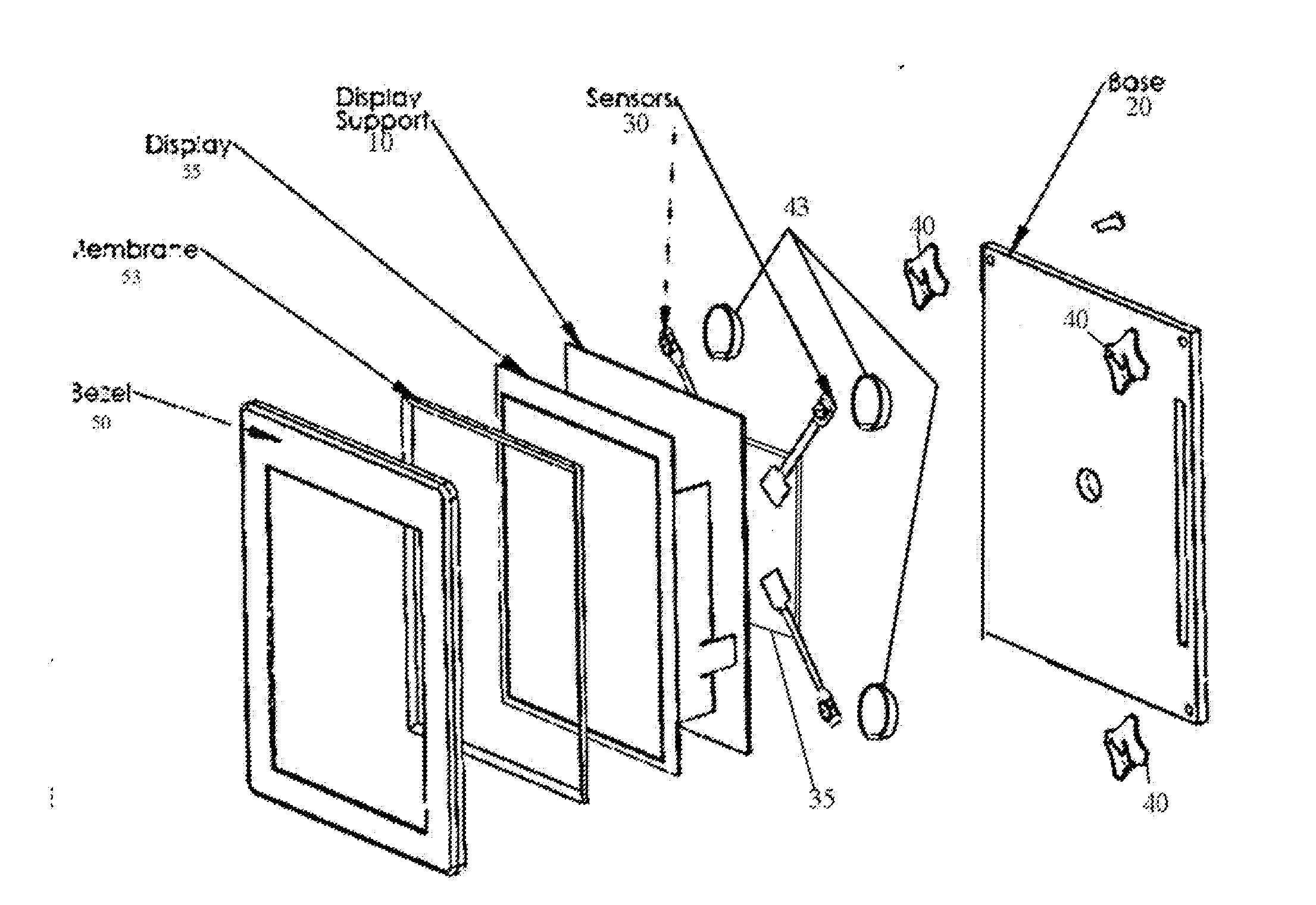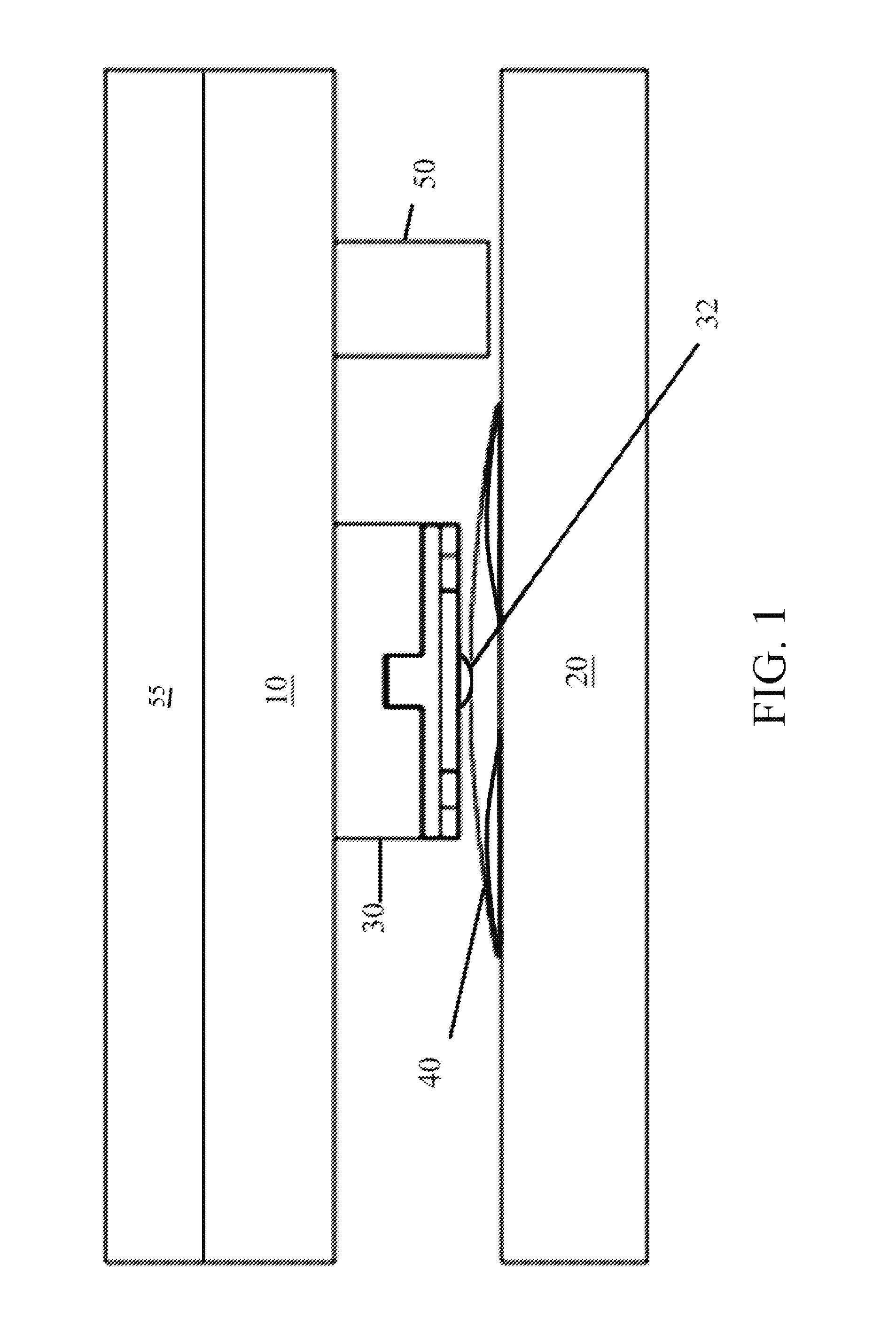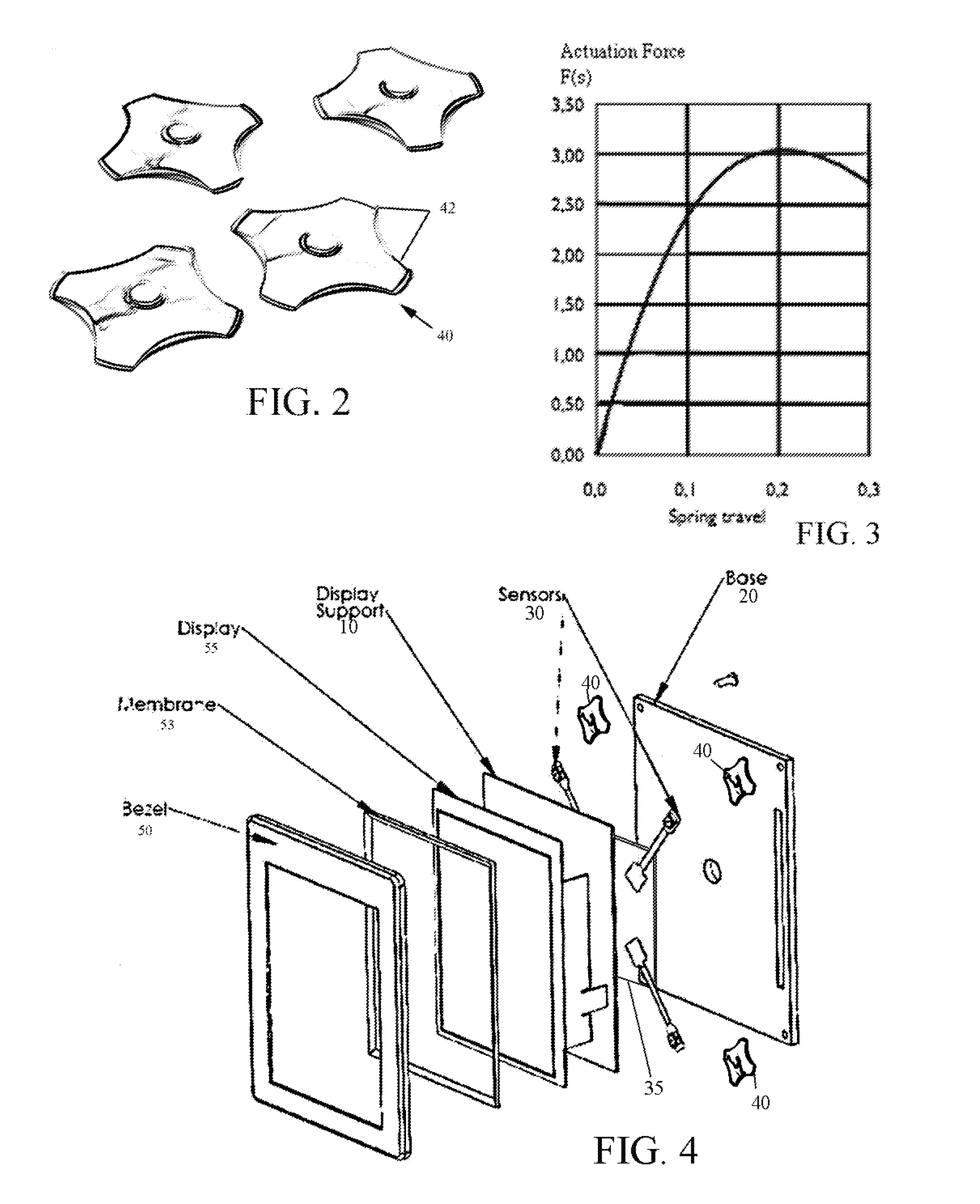Snap domes as sensor protection
a technology of sensor protection and snap dome, which is applied in the direction of emergency actuators, contact surface shapes/structures, instruments, etc., can solve the problems of affecting the operation of the sensor, so as to facilitate the use of mechanical stops, reduce tolerance, and effectively expand the range of acceptable force
- Summary
- Abstract
- Description
- Claims
- Application Information
AI Technical Summary
Benefits of technology
Problems solved by technology
Method used
Image
Examples
Embodiment Construction
[0028]The present invention is a semi-rigid pliable snap-dome positioned over each sensor for increased overload protection. The snap dome is unidirectionally-resilient. It imparts a predetermined resistance to compression over a known range of travel along the z-axis, but is substantially unyielding along the x- and y-axis. In a preferred embodiment the snap dome is used in combination with a standoff such as a stop screw. As the touch panel is depressed toward the standoff, the snap dome resists compression over a known range of travel along the z-axis until the touch panel encounters the standoff. The standoff then imparts dead-stop overload force protection to the sensors. The effective result is similar to the known Poron™ microcellular polyurethane pads described above inasmuch as it allows for the placement of mechanical stops (such as stop screws) with a less exacting tolerance. However, the snap domes introduce no x- or y-axis force losses / increases, and does not cause tilt...
PUM
 Login to View More
Login to View More Abstract
Description
Claims
Application Information
 Login to View More
Login to View More - R&D
- Intellectual Property
- Life Sciences
- Materials
- Tech Scout
- Unparalleled Data Quality
- Higher Quality Content
- 60% Fewer Hallucinations
Browse by: Latest US Patents, China's latest patents, Technical Efficacy Thesaurus, Application Domain, Technology Topic, Popular Technical Reports.
© 2025 PatSnap. All rights reserved.Legal|Privacy policy|Modern Slavery Act Transparency Statement|Sitemap|About US| Contact US: help@patsnap.com



